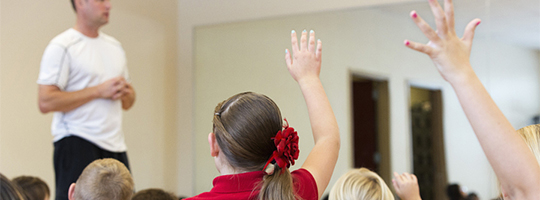Last week a listener left a comment calling me out on a few things I’ve failed to follow up on and wanted to get my thoughts. You can find the original comment here. Since there were quite a few questions, I decided to answer them in a post here incase some other folks might be wondering the same thing.
“Finally after one year of listening I was able to catch up on all episodes. In the beginning I was really thinking this is a great web show but by now I have some serious doubts that I am going to formulate some questions for you.”
First off, thanks for listening to all the old episodes as it’s been over three years in the making. Hope all is well in Berlin, Germany too (yes, I checked your IP address). My parents just recently moved to Leipzig so will be visiting sometime next year once it warms up.
There are 160+ episodes now across three years so I don’t remember what’s said in every episode. Since you listened to all episodes in a row, chances are your memory is much fresher on everything that happened in a much shorter time frame.
Hope there are a few tips that you have already applied to your store!
Our pre-show updates are generally kept under one minute for each person, so that means we have to cut out stuff that either isn’t that important, didn’t work out, or just isn’t our focus right now. Sure, that might create holes in the narrative here and there, but I think most people are not keeping track and we can live with it. On to the responses:

“Why do you talk about so many “best-practices“ on your show but don’t realize on your website?” What you say: Content Marketing Strategy is a long-term strategy. What you do: You have only a few articles from May/June and that’s about it.”
Content marketing isn’t only limited to blog posts. It can also be in the form of infographics, videos, pictures, podcasts, presentations, and more. Earlier in the year I experimented with some text content on the blog, but realized that for fashion products it doesn’t really work. It really has to be image or video driven – especially if your product isn’t about fixing a problem, but creating a desire. You can say a fashion magazine like GQ or FHM is text content, but 70% of each edition is still image based.
After seeing no traction for about 2-3 months, I stopped doing text content and started experimenting with Instagram here. It’s still too early to see any results yet, but followers have grown from 100 to 4,000 so far. I tried some different content ideas at the 100-200 follower level but there was no critical mass to see any meaningful results. The goal is to get 10,000 followers in the next few months and see what content is getting the most engagement.
Whether that’s quotes, travel photos, product photos, or comedy – who knows? Likewise, it’s not worth talking about yet since it may or may not work too, so we’ll have to see later on.
“What you say: Alt images text are important for SEO. What you do: Your alt images are “image 1” etc.”
You’re right on this one. I had my images all setup correctly when the store first launched in 2014, but earlier in 2015 I updated some and probably forgot to check the alt tags. Thank you for pointing that out.
“What you say: Generating a e-mail list is essential for your marketing.What you do: There are no pop ups or other serious attends to catch leads on your website.”
After realizing that image-based content was what fashion products needed, I tried a few discount code opt-ins but that didn’t seem to work either. At the core there just wasn’t enough consistent traffic coming to the site to really split test different opt-ins, so I decided to focus on traffic building first by creating a stronger profile on Instagram.
Until the Instagram profile gets bigger, the project is not a priority as I’m focused on BMOS client services which is going quite well. A problem with wallets is that most people don’t need to purchase them on a repeat basis, so you’ll have to churn through a lot of new traffic in order to really grow this.
With one anchor client we’ve been able to increase their email opt-ins from 3.5% to 4.2% which is pretty good. People only care about the results you can get for them and that’s all that really matters. Many of these clients have more mature businesses, so simple tweaks can make a bigger difference.

“Why do talk about what you want to do but never catch up on how it went?”
Sometimes I don’t follow up because it was just an idea that didn’t work out, sounded good in the moment, or wasn’t worth talking about again. We now only record every two weeks and a lot happens in-between then. For each pre-show update we try to keep it under one minute (for each person) so a lot of unimportant stuff is left out on purpose. I do not keep a checklist of everything I say on each episode, nor do I plan to in the future either. Keep in mind you are also listening to old episodes all at once in the past year, so the sense of time and progression isn’t the same as if you started in 2012 and only listened once a week.
“What happened with your crowdfunding campaign? Why are you talking about around 10 episodes, what you are working on but not why you failed?”
I chose not to talk about it for a few months and that was my decision on purpose.
After the campaign failed I didn’t want anything to do with it. I’d been working on it from October 2014 – March 2015 and needed some time away to process what didn’t work and what went wrong. So during that time I really had nothing to say as I was still trying to figure it out myself. Have you done a crowdfunding campaign before? If not, you won’t understand the feeling that comes with publically failing.
It barely hit any traction at around 10% funding and the issue came down to a few things. One, doing product design and marketing as one person isn’t viable, let alone running a podcast at the same time.
Every time I worked on the product, the marketing department stalled and vice versa. The solutions were to either find a co-founder, spend a longer period of time (1-2 years) to really develop both product and marketing, or spend money to outsource one of them before launch. A lot of it was going in with unrealistic expectations on what one person could do in a short six month period of time.
So I tried some Facebook Ads to drive visitors to a landing page to sign up for launch information, but it was a huge gamble. Even if you can get good CPC or CTR rates, you have no idea how good this traffic is until the campaign actually launches. Each email I got was obtained at a cost around $1.50 USD, so building a list of up to 3,000 people would have costed almost $4,500 USD for something that may or may not work.
The other solution is reaching out to fashion blogs and influencers for traffic, but turns out they don’t accept submissions until a campaign is live, in addition to reviewing a product sample in some special cases. Given the product was still in development and I only had three samples, it didn’t make sense to send them out to bloggers as I still needed them for video, photos, and other tasks.
What I should have done was a small production run of 20-30 units, send them to key influencers, family, and peers to have them test it out. Besides getting actual design and user feedback, this gives you more buy-in for them to promote you once it’s actually live and it snowballs from there. Going back to the timeframe issue, six months is not enough time to get this done if you are starting the campaign from scratch.
That’s probably the 80/20 of everything related to that campaign, and since it’s not my focus anymore I don’t see any reason to talk about it from now on.

“How is it going with your shop? The only thing what you have mentioned is that the branding is probably not good. I think there are more learnings that you can share with us what works and what not for you.”
I share only what I’m comfortable sharing. A few copycats have popped up since I started talking about it in 2014, and some people have even tried to ask me for my supplier’s information because they also want to get into wallets. Since it’s still a new project, I don’t see the benefit in giving everything away that’s working which will result in a copycat or rip-off.
Being under the spotlight on the internet exposes you to this, so we are now more selective with what we share on purpose. Travis has also come under fire lately as someone has tried to negative SEO his website. So right now we only choose to share information that we are comfortable with, unless it’s in a mastermind group where everyone is more transparent since things are off the record.
“Over time you have lost a lot of credibility for me. Don’t get me wrong. I am not a hater and I really like you. Otherwise I would have not raised my concerns in such a way.”
It’s fine, I’m not going to lose any sleep over your feedback.
Hope this helps!
Subscribe to Build My Online Store in your favorite podcast player, or check out the episode list of our eCommerce podcast.


Comments
Hi Terry,
Wow, this is really spectacular and was totally unexpected. Thanks for this massive follow up.
With regards to sensitive information:
When choosing to stay in the spotlight I guess, there is always the trade off of what to share and what not. I wasn’t aware that you have to deal with so many copy cats and even worse things. That’s really a shame. Especially considering that you giving out so many information for free without expecting anything in return. So I can totally understand that you don’t want to share sensitive data and I also didn’t expect it. Still I was just wondering how the shop is running because you didn’t mention it for many episodes. So thanks again for following up on this.
With regards to failing:
I work within the start up industry and failing belongs to our business. It took me a while to get used to failing and talking about it (with colleagues, friends etc.) especially if you worked on projects for more than one year. So praising quotes like “Fail fast and often” and really live for it, are 2 very different things. That’s why I would encourage you to share your fails because you don’t have to proof us anything. You are well-respected in the industry and can talk openly about it, just would make you more credible.
With regards to smaller experiments:
I see that you don’t want to do a check list what you tried out and what not but I think it still would be great just to keep a bit more track of what you are testing and share it with us. I assume, that there is no harm for you but still creates a lot of value for your listeners. However that is just my opinion and totally up to you.
So thanks again for this honest and detailed response. Very much appreciated! And I am looking forward to your next podcast.
Cheers, Chris
This was awesome. Thanks guys for all the honest feedback.
I always thought of you like “Do what works for you” as many episodes Travis would discuss that he’d do something and not working out so good for him, so I imagined most of your efforts worked around that.
Also, too bad your crowdfunding campaign didn’t work, but hey, now you know what works and what does not.